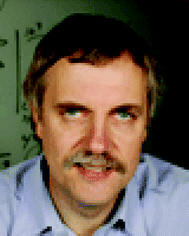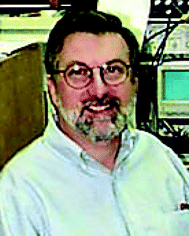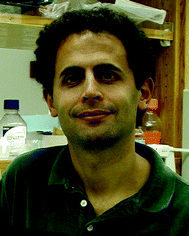Meet the Editorial Board
Abstract
The Editorial Board of Molecular BioSystems is made up of an international team of enthusiastic scientists whose expertise covers a broad subject range. Here we present profiles of Thomas Kodadek, Ruedi Aebersold, Patricia Bassereau, Hagan Bayley, Benjamin Cravatt, Christof Niemeyer, Kazunari Taira and Suzanne Walker.
Thomas Kodadek is Chair of the Molecular BioSystems Editorial Board and is based at the University of Texas Southwestern Medical Center, USA, where he is Professor of Internal Medicine and Molecular Biology and also the Director of the Center for Translational Research. His current research focuses on proteomics and on the enzymology and regulation of eukaryotic gene expression. All of his projects use a wide range of techniques from across the traditional disciplines of biology, biochemistry and chemistry.
His transcription research examines new roles of the proteasome in gene expression and the mechanistic understanding of these roles. His current proteomics projects are directed towards developing new chemical techniques and using them to study important receptor-initiated signaling pathways. A major effort is underway to develop protein-detecting microarrays based on synthetic capture agents. Another area of his research is the use of several methods to develop genome-wide transcription factor–DNA binding maps that should complement traditional microarray-based expression analysis in understanding how cells respond to mutations or stimuli.
 | ||
| Plate1 Thomas Kodadek | ||
Ruedi Aebersold's research interests centre around proteomics; specifically new technologies for quantitative proteomics, and the application of these technologies to understand complex biological systems. Current applications of quantitative proteomics technology in his research include looking for protein markers that differentiate cancer cells from normal cells, investigating the mechanisms of fundamental cellular processes by the comparative analysis of the gene and protein expression profiles in cells at different states, and studies in the area of medical microbiology.
He has recently moved from the Institute of Systems Biology in Seattle, USA, which he co-founded, to become Professor for Molecular Systems Biology at the Institute of Biotechnology, ETH-Zürich, Switzerland.
 | ||
| Plate2 Ruedi Aebersold | ||
Patricia Bassereau is based at the Curie Institute in Paris, France, where her research, in collaboration with cell biologists and theoreticians, aims to identify the role of the membrane in important cellular functions and to set up biomimetic systems to identify pertinent physical parameters. She is working towards developing a realistic physical model of cell membranes and on defining model systems for studying intracellular transport. A third area of her current research focuses on developing systems based on synthetic membranes and decorated solid surfaces in order to mimic cell adhesion.
 | ||
| Plate3 Patricia Bassereau | ||
Hagan Bayley is Professor of Chemical Biology at the University of Oxford, UK, having recently moved from the Texas A & M University, USA. His research covers a range of topics using the techniques of protein chemistry, molecular genetics and biophysics. Current projects are varied and include engineering membrane channels and pores for applications in areas such as drug delivery and the construction of biosensors. Research in the development of high-throughput screening methods for membrane proteins is aimed at yielding procedures for refolding membrane proteins and for forming three-dimensional crystals from them; long-term aims include use in high-throughput assays in drug discovery and as a basis for making biosensor arrays. Other projects include the design and synthesis of biomolecular materials, and signal transduction research using caged peptides and proteins.
 | ||
| Plate4 Hagan Bayley | ||
Benjamin Cravatt's expertise lies in chemical physiology and proteomics. His research is directed towards understanding complex physiology and behaviour at the level of chemistry and molecules. One current focus of this research is a family of chemical messengers termed the fatty acid amides, which have been shown to affect many physiological functions, including sleep, thermoregulation, pain sensitivity, and angiogenesis. A second strand of research is the design and use of chemical probes for the global analysis of protein function. In particular he is interested in using these probes to enhance the quality of information that can be obtained from proteomics experiments. He is based at the Scripps Research Institute, USA, in both the Department of Chemistry and the Skaggs Institute for Chemical Biology.
 | ||
| Plate5 Benjamin Cravatt | ||
Christof Niemeyer's research at the University of Dortmund, Germany, focuses on various aspects of semisynthetic DNA–protein conjugates and their applications in four areas of molecular biotechnology; chemistry of bioconjugates, immunological diagnostics, microarray technologies, and nanobiotechnology.
Semisynthetic DNA–protein conjugates are synthesized by covalent coupling chemistry, or by taking advantage of non-covalent self-assembly based on biomolecular recognition systems. A range of chemical and biological techniques are used both in the synthesis and the subsequent characterization. Applications for this include immobilizing functional proteins conjugated with single-stranded nucleic acids on a DNA-microarray to readily produce laterally microstructured protein-microarrays, reusable biosensor chips and lab-on-a-chip devices. His nanobiotechnology research centres on using nucleic acids, proteins and inorganic nanoparticles as building blocks in the “bottom-up” assembly of functional supramolecular devices.
 | ||
| Plate6 Christof Niemeyer | ||
Kazunari Taira is Professor of Chemistry and Biological Chemistry at the University of Tokyo, Japan, and also Director of the Gene Function Research Center of the National Institute of Advanced Industrial Science and Technology (AIST) in Tsukuba Science City, Japan. The main focus of his research is the use of the tools of physical organic chemistry and molecular biology to study biochemical reactions. He is also interested in the mechanisms of action of ribozymes and their possible applications in medicine and has recently moved into the fields of functional protein selections and RNAi technologies in medicine.
 | ||
| Plate7 Kazunari Taira | ||
Suzanne Walker's research program emphasizes the use of chemical tools and approaches to study problems in biology and biochemistry. She is interested in the biosynthesis of the bacterial cell wall and is studying individual enzymes involved in various pathways while also trying to understand how these enzymes function together to produce a three dimensional polymeric matrix on the bacterial cell surface. As part of this latter effort, she is working to develop chemical probes to image biopolymer synthesis on cell surfaces. She also has an interest in glycosyltransferases and glycosylation pathways, and is working on methods to alter and inhibit glycosyltransferase activity with the longterm aim of using these methods to reprogram glycosylation pathways in cells. Trained as an organic chemist, she spent several years on the faculty of the Department of Chemistry at Princeton University, but moved in the summer of 2004 to Harvard Medical School where she is a Professor of Microbiology and Molecular Genetics with an affiliate appointment in the Department of Chemistry and Chemical Biology.
 | ||
| Plate8 Suzanne Walker | ||
| This journal is © The Royal Society of Chemistry 2005 |
